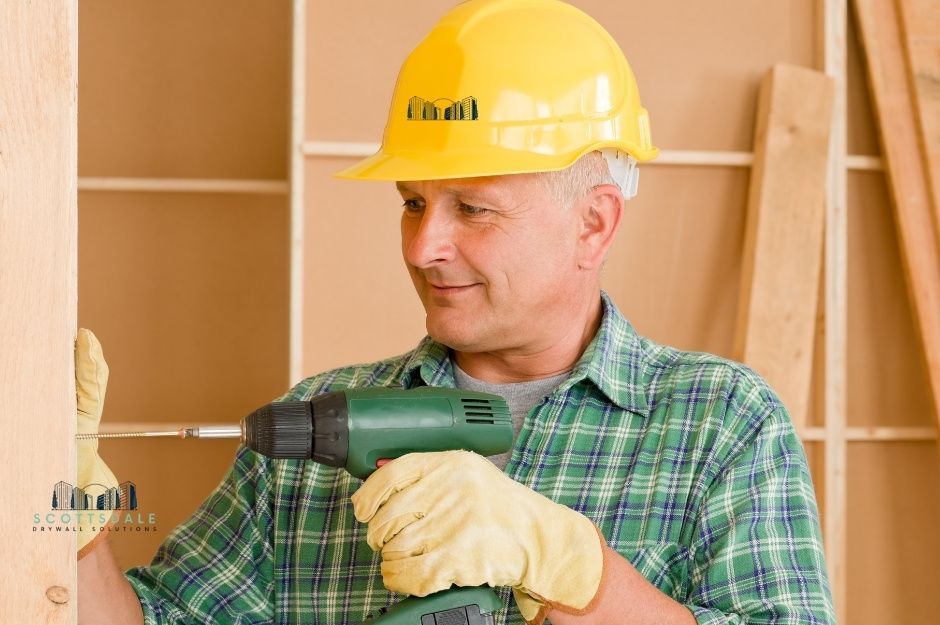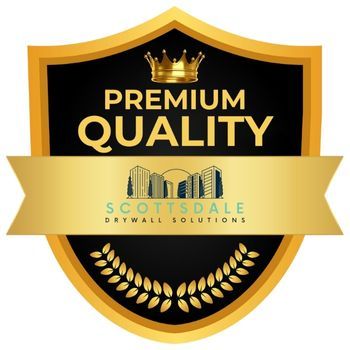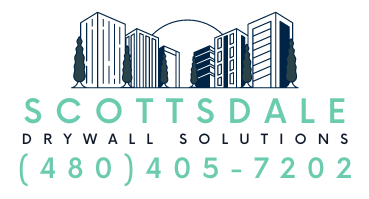Paradise Valley Drywall Repair Services
Trustworthy Sheetrock Repair Contractors in Paradise Valley, Arizona

Paradise Valley, an affluent desert town with a population of 12,658 as of the 2020 census, sits east of Phoenix at the base of iconic landmarks like Camelback Mountain and Mummy Mountain. Paradise Valley homeowners trust professional drywall services at Scottsdale Drywall Solutions to maintain their properties' pristine condition. From small repairs like nail pops and settling cracks to major issues like water damage and mold remediation, these contractors handle a complete range of drywall needs.
Licensed Paradise Valley drywall contractors typically charge between $200-$1000 for repairs depending on the scope of work needed, including patching holes, fixing cracks, addressing moisture damage, and installing new drywall sections. When you need drywall work done, experienced professionals can assess the damage and recommend the most effective solution. Given that Paradise Valley has 5,728 households spread across 15.4 square miles of primarily large one-to-five-acre lots established after World War II, many properties feature unique architectural challenges that require specialized drywall expertise.
Your walls deserve expert care to maintain both structural integrity and visual appeal. Professional drywall services in Paradise Valley include water damage restoration, mold removal, crack and hole patching, popcorn ceiling repairs, seam repairs, and complete drywall installation with proper taping and finishing for a flawless look.

Scottsdale Drywall Solutions (CP)

Comprehensive Drywall Repair Services in Paradise Valley
Paradise Valley's unique desert climate and residential architecture, developed primarily from agricultural land first settled in the 1880s, require specialized drywall repair approaches. Professional drywall repair services tackle everything from moisture issues to structural damage with precision and expertise. The town's location between the Phoenix Mountains to the south and the McDowell Mountains to the east creates specific environmental conditions that can affect drywall integrity over time.
Addressing Water Damage
Water damage poses significant risks to your drywall's integrity. Quick action prevents further deterioration and costly replacements. In Paradise Valley's desert environment, where the town was originally named for its abundance of spring wildflowers and palo verde trees, unexpected water damage from monsoon seasons or plumbing issues can be particularly problematic in homes built on the area's expansive lots.
Professional drywall repair teams identify the water source and assess the full extent of damage before beginning repairs. The damaged sections are carefully removed to prevent mold growth.
Specialized moisture meters determine if adjacent areas require attention. New moisture-resistant drywall replaces compromised sections.
The repair process includes:
- Complete removal of wet materials
- Industrial-grade dehumidification
- Installation of water-resistant panels
- Professional finishing to match existing texture
Mold Remediation Solutions
Mold growth behind drywall requires immediate professional attention. Certified technicians use specialized equipment to detect hidden mold colonies. This is particularly crucial in Paradise Valley, where the combination of desert heat and occasional moisture from irrigation systems serving the area's golf courses and resorts can create unexpected humidity pockets in homes.
The remediation process starts with containment to prevent spore spread. Affected drywall sections are removed following strict safety protocols.
Treatment includes:
- Air quality testing
- HEPA filtration
- Anti-microbial applications
- Replacement with mold-resistant materials
Effective Patch Repairs
Patch repairs restore your walls' appearance after holes or dents occur. Professional repair services match existing textures seamlessly. Many Paradise Valley homes, built on large lots that attracted residents seeking to preserve the area's unique character when the town incorporated in 1961, feature custom architectural details that require expert matching techniques.
Technicians select appropriate materials based on damage size:
- Small holes: Spackling compound
- Medium damage: Self-adhesive mesh
- Large areas: New drywall sections
Each repair receives proper sanding and texture matching for invisible results.
Repairing Drywall Cracks
Drywall cracks indicate potential structural movement or settling. Professional assessment determines the underlying cause before repairs begin. In Paradise Valley, where homes sit on varying terrain from the base of Mummy Mountain to areas near Camelback Mountain, soil composition and elevation changes can contribute to unique settling patterns that affect drywall stability.
Repair techniques vary by crack type:
- Hairline cracks: Joint compound filling
- Stress cracks: Fiber tape reinforcement
- Settlement cracks: Flexible compounds
Your repair includes proper joint tape application and multiple compound layers for durability. Each layer is carefully sanded to achieve a smooth finish.
Specialized Ceiling and Surface Repair
Professional drywall repair services address specific ceiling and wall surface issues through targeted techniques and specialized tools. Expert contractors utilize precise methods to restore damaged areas while maintaining visual consistency across the repaired surfaces. In Paradise Valley, where many properties feature the large-scale architectural elements typical of homes built after World War II on spacious lots, ceiling work often requires specialized equipment to handle higher and more expansive surfaces.
Popcorn Ceiling Restoration
Popcorn ceiling repair requires careful attention to match existing texture patterns. You'll need specialized tools and materials, including hopper guns and texture compounds designed specifically for acoustic surfaces.
Water damage often causes popcorn texture to peel or dissolve. Professional repair services first address any underlying moisture issues before applying new texture. This is especially important in Paradise Valley homes, where many original structures date to the post-war development boom and may feature older ceiling treatments that require expert restoration.
The restoration process includes scraping loose material, preparing the surface, and applying new acoustic texture in layers. Each layer must dry completely between applications.
Tape and Seam Repair Techniques
Proper tape and seam repair starts with removing damaged joint tape and cleaning the seam area thoroughly. Professional contractors use paper tape rather than mesh for most applications, as it creates stronger joints.
Apply joint compound in three thin layers, feathering each coat wider than the previous. The final layer should extend 12-18 inches on each side of the seam.
Sand between coats using progressively finer grit sandpaper for optimal smoothness. Professional-grade tools ensure precise application and blending with surrounding surfaces.
Managing Nail Pops
Nail pops occur when fasteners lose their grip in the drywall, creating small bumps or holes. The repair process begins by driving a new screw about 2 inches above or below the popped nail. In Paradise Valley's desert climate, where temperature fluctuations between day and night can cause building materials to expand and contract, nail pops are a common issue that affects homes throughout the town's 5,728 households.
Remove the old nail and create a small depression in the surface. Fill the area with two thin coats of joint compound, allowing proper drying time between applications.
Professional contractors often check surrounding areas for potential future nail pops, as they typically occur in patterns. This preventive approach helps avoid repeated repairs in the same section of wall.
Expert Drywall Installation and Finishing
Quality drywall installation requires precise measurements, proper materials, and expert techniques to create perfectly smooth walls and ceilings. Professional contractors utilize specialized tools and proven methods to deliver superior results. Paradise Valley's status as one of Phoenix's wealthiest suburbs means homeowners expect premium finishes that match the area's high-end reputation and complement nearby attractions like luxury resorts and championship golf courses.
Professional Drywall Installation Process
Start by measuring your walls and ceiling carefully to determine the exact amount of drywall sheets needed. Select the appropriate thickness - 1/2 inch for walls and 5/8 inch for ceilings is standard.
Install insulation and verify electrical and plumbing work is complete before hanging drywall. Begin at the ceiling, then move to walls. Secure sheets with drywall screws placed every 12 inches along studs.
Cut holes precisely for outlets, switches, and fixtures using a rotary tool or drywall saw. Stagger joints between sheets to prevent long seams that could crack. Leave a 1/4 inch gap at floor level. When working on Paradise Valley's larger custom homes, built on the town's characteristic one-to-five-acre lots, contractors must often coordinate with other trades working on expansive floor plans that may include multiple wings and entertainment areas.
Surface Preparation and Priming
Clean all surfaces thoroughly to remove dust and debris. Apply self-adhesive mesh tape to seams and corners for added strength.
Mix joint compound to proper consistency. Apply three thin coats of compound over seams and screw heads, allowing each layer to dry completely. Sand between coats with progressively finer-grit sandpaper.
Fill any remaining gaps or imperfections. Wipe surfaces with a damp sponge to remove sanding dust. Apply a high-quality primer designed for new drywall to ensure proper paint adhesion. In Paradise Valley's dry desert environment, proper priming is essential to prevent the rapid moisture absorption that can occur in low-humidity conditions.
Finishing for a Seamless Look
Choose your desired texture - smooth, orange peel, or knockdown. Apply texture using specialized spray equipment or hand tools depending on the pattern desired.
Let the texture dry completely before painting. Apply two coats of paint, using proper techniques:
- Roll in W patterns for even coverage
- Cut in edges with an angled brush
- Allow adequate drying time between coats
Inspect walls in natural light to spot any imperfections. Touch up as needed for a flawless finish. Your newly installed drywall should appear completely seamless with no visible joints or fasteners. The abundant natural light in Paradise Valley, situated in the expansive valley that extends from north of the Phoenix Mountains to Cave Creek and Carefree, makes high-quality finishing work essential, as any imperfections will be clearly visible in the bright desert sunshine that streams through the large windows typical of the area's architectural style.
